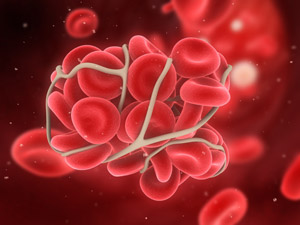-
How to tell if you have a blood clot
Posted on January 15, 2016 by Vein Admin in vein healthBlood clots form inside of the deeper veins in the body. It is referred to as deep vein thrombosis. Blood clots have a gel like consistency and though sometimes resolve themselves, often times will not resolve on their own and require immediate medical attention.
The most common place for a clot to occur is in the lower leg. Clots can happen anywhere in the body though.
Signs you may have a clot:
- Pain
- Swelling
- Feelings of numbness and cold
- Or opposing that, a warm sensation compared to surrounding area
- Pain in calf when stretching toes upwards
- Discoloration – blueish and dead looking
- It likely will feel like an extreme version of your leg going to sleep only it will not wake up, you will not start feeling pins and needles.
Note: It is almost always one single leg. If you are having issues in both legs at the same time it may be something besides a blood clot.
Other areas besides the legs where clots may form and their additional symptoms
Clot in the LUNGS
- Breathing issues
- Heart palpitations
- Chest pain
- Shortness of breath
- Coughing up blood
Clot in the BRAIN
- Severe and sudden headache often described as the worst headache ever
- Difficulty speaking
- Vision changes
Clot in the HEART
- Chest feels painful and or heavy
- Lightheaded
- Shortness of breath
Clot in the ABDOMEN
- Abdominal pain
- Vomiting
- Diarrhea
Blood clots are serious and can be life threatening. The sooner you receive proper medical treatment the better your odds are. If you are currently experiencing what you believe may be a blood clot please go immediately to the Emergency Room, Call 911 or your doctor.
To get a vein health checkup and FREE E-vein screening please visit www.weknowveins.com and click the button at the very top of the page. Dr. Joseph Magnant and his staff will be happy to assist you.






